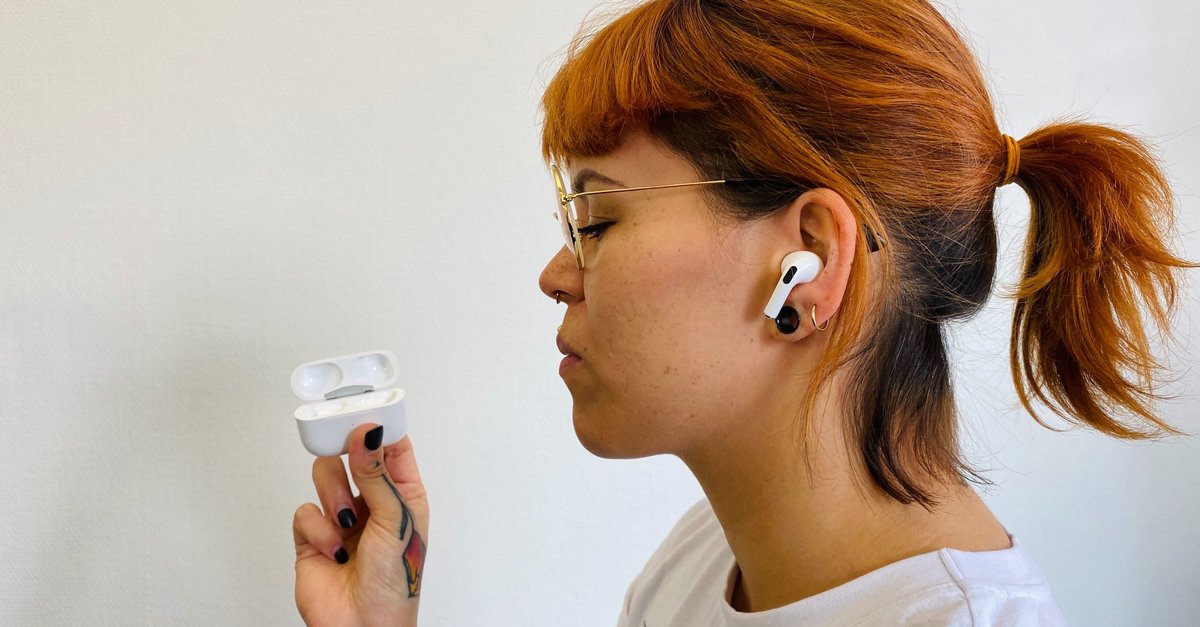AirPods Pro tips: 15 things everyone should know before buying the headphones
Apple’s AirPods Pro are still among the best true wireless headphones on the market. However, before buying, you should go through some positive and negative points from battery to water resistance, which we will check off here in turn.
Apple AirPods Pro: a must-buy with concerns
I’ve had a lot of true wireless headphones in my ears over the last few years. Although the first generation AirPods Pro were introduced back in 2019, they remained my favorite for a long time. In combination with an iPhone or iPad, it is almost a must-buy. Apple has hit the nail on the head by combining the most important properties in a first-class way: The AirPods Pro are light, compact, connect reliably, sound good, have effective noise canceling and sufficient endurance. However, this also has its price in the truest sense of the word, because …
… with 299 euros (RRP) are the AirPods Pro (2nd generation) from Apple as expensive as a mid-range smartphone. Simple true wireless earbuds that essentially fulfill the same function (= play music + headset) are available from Amazon for 60 euros and even less. Technically and qualitatively, however, there is a gap here.
In terms of price, the AirPods Pro are only in the midfield overall, the “Pro” in the name should not be taken too seriously. In the real professional sector (studio and stage technology), you can easily pay over 1,000 euros for a pair of in-ear headphones like the “Shure SE846”. And these things are worth every penny.
Don’t fool yourself: At some point, the built-in batteries will be charged with daily use lose efficiency. An exchange is practically impossible due to the construction, it is, to put it harshly, a “disposable product” – at least after a few years of use. At least …
… the user also has the Apple service, which takes care of worn-out batteries. However, a fee is charged for this “Battery Service” totaling up to 165 euros. 65 euros per earpiece and another 65 euros for the charging case. The recommended option here is AppleCare+ for headphones.
Here you can see the scope of delivery of the AirPods Pro (1st gen.). Important to know: It is no power supply included (the environment thanks you). The cable is Lightning-to-USB-C, so it can be plugged into a Macbook with a USB-C socket or into a corresponding power supply. Another solution: You simply take a power adapter + cable from your iPhone or iPad. The main thing is that the Lightning end is there and can be placed in the AirPods Pro charging case.
Some owners claim that the AirPods Pro are “hard to grab” when you want to take them out of the case. That may be the case – but only if you don’t know how to do it properly: The thumb rests on the case, the index finger pushes the earbud forward in the direction of the thumb (see animation). It always works, and one of the earbuds never accidentally falls down.
For some users, the AirPods Pro are the first in-ear headphones Noise canceling (ANC). Some already know the active noise reduction from over-ear models like the Bose QuietComfort 45 or the Sony WH-1000XM4. The ANC of the AirPods Pro is not quite on this level, here the large headphones from the premium segment are unbeaten.
But: Apple’s debut in terms of ANC can easily keep up with other in-ear headphones that offer this function. Journeys in Berlin’s subways are much more bearable, you can definitely listen to music “in peace”. However, the AirPods Pro do not offer absolute silence – but no manufacturer has managed to do that so far.
The AirPods Pro silicone sleeves are custom-made – they have small dust screens and a oval attachment, which is clipped onto the earbud housing. who substitute needs should buy it directly from Apple or at least make sure that the adapters are specifically designed for the AirPods Pro.
The AirPods Pro (1st Gen, 2019) are protected from sweat and water (IPX4), so they are also recommended for sporty (sweaty) outdoor use (rain). However, this only applies to the earbuds, not to the charging case!
With the AirPods Pro (2nd generation, 2022) presented in September, both the earphones and the charging case are waterproof.
To use the AirPods Pro (1st generation, 2019) with an iOS device such as the iPhone or iPad, is at least iOS 13.2 necessary. If you absolutely want to stay with an older version of the mobile operating system, you should refrain from buying it. These are Apple’s AirPods Pro requirements:
iPhone or iPod touch with iOS 13.2 or later iPad with iPadOS 13.2 or later Apple Watch with watchOS 6.1 or later Apple TV with tvOS 13.2 or later Mac with macOS 10.15.1 or later
If needed, check out our AirPods Pro unboxing video above.
With the AirPods Pro (2nd generation, 2022), Apple says that the “latest version of iOS or iPadOS” is required. Otherwise, they also work “as Bluetooth headphones with Apple devices with older software and with devices from other suppliers, but with limited functionality.”
True wireless earbuds from other manufacturers often have their own app in which the headphones can be configured. The AirPods Pro, on the other hand, are configured in the Bluetooth menu of the connected device. Find it here on the iPhone: Settings > Bluetooth > AirPods Pro > “i”
The headphones must be connected (opening the charging case is enough) for this menu to appear. Here you can change the assignment of the pressure sensors on the handles or switch off the noise canceling.
The volume of music or film sound can be adjusted not directly to the AirPods Pro (1st gen.) rules – there are simply no buttons for this. This was already the case with normal AirPods and is a nuisance for some users. So you have to readjust the player, for example on iPhone with volume up/down buttons or on the Apple TV with the remote control. The fact that Siri can be activated permanently if required results in a new and convenient operating option. One can “Hey Siri” call and ask the digital assistant to change the volume. Very practical, for example if you don’t have a free hand: “Hey Siri, volume to 70 percent.” or “Hey Siri, stop music playback.”
With the newer AirPods Pro (2nd gen.), the volume can be adjusted by swiping the stems.
Even if the AirPods Pro are the perfect companions for the iPhone, you can also use Apple’s true wireless earbuds with Android, for example with a Samsung Galaxy S10. We have written a guide for this. Even the noise canceling works, but the pairing is a little more complicated.
Real 3D sound (“Spatial Audio”) from headphones is no problem with the AirPods Pro. Both films and (live) music can appear amazingly alive, especially because head movements are taken into account. As is so often the case with Apple, no complex setup is required for this, the function can be used immediately if the source material is correct and the app is compatible. Good to know: If you don’t like the surround experience, you can switch to the conventional one at any time stereo switch back. This is particularly quick via the control center in iOS.
There are numerous true wireless headphones that can be operated by touch. The AirPods Pro are similar, but have one crucial difference: the stems are pressure-sensitive, but they do not react to simple touches like a smartphone display (tap), but only to light pressure with two fingers. This effectively avoids incorrect entries – for example by simply adjusting the earphones. I wish more headphone manufacturers would include such useful details in their products.
The second-generation AirPods Pro, presented in September 2022, have a touch sensor that can be used to control the volume with a swipe movement.
AirPods Pro can also use individually: One earbud stays in the charging case, the other goes in your ear. A sensor automatically recognizes which copy is in use. For example, extensive phone calls (or meetings) by switching to the other earphone when the battery is empty, which then comes out of the case freshly charged.



